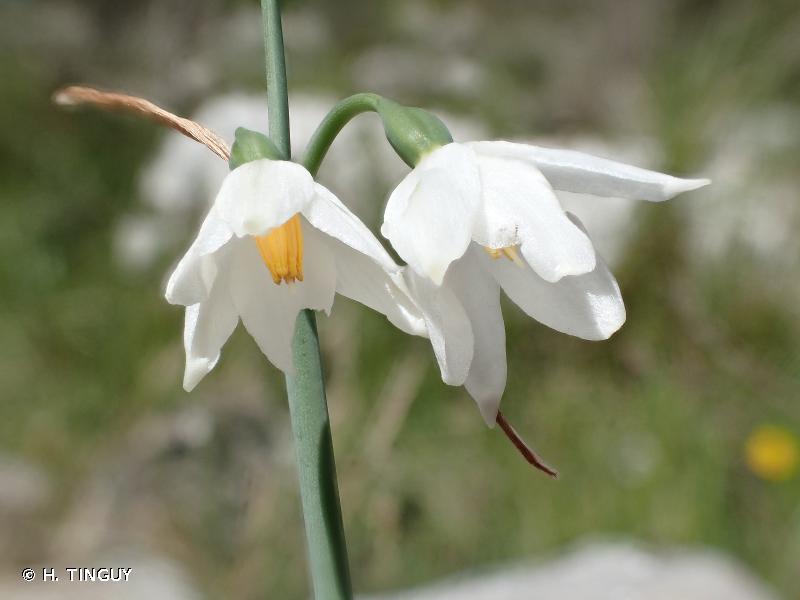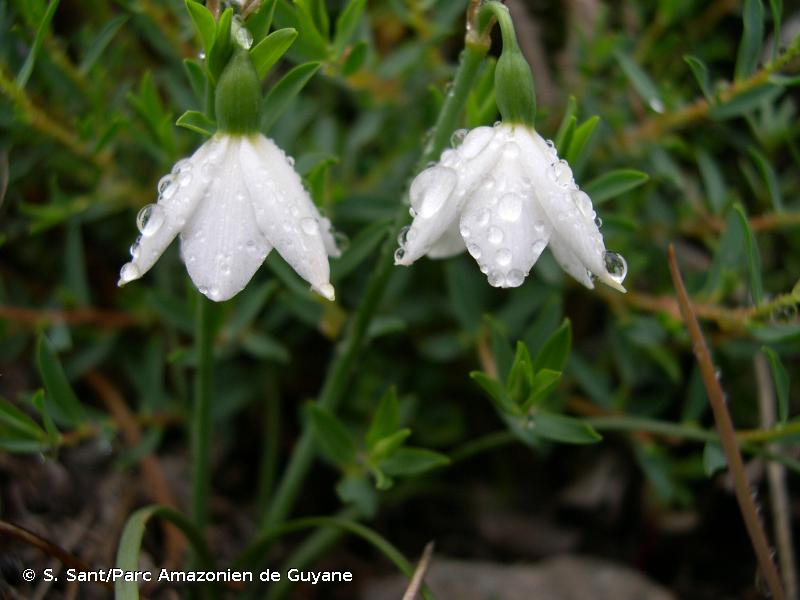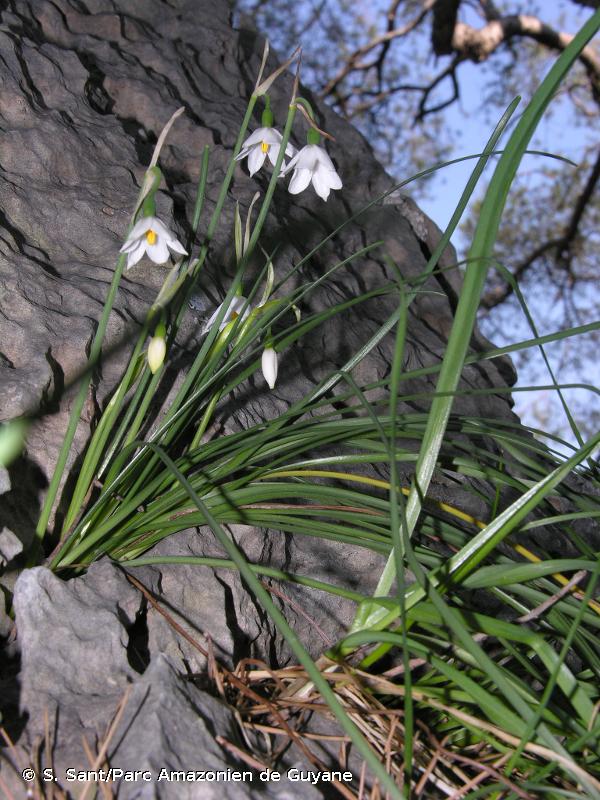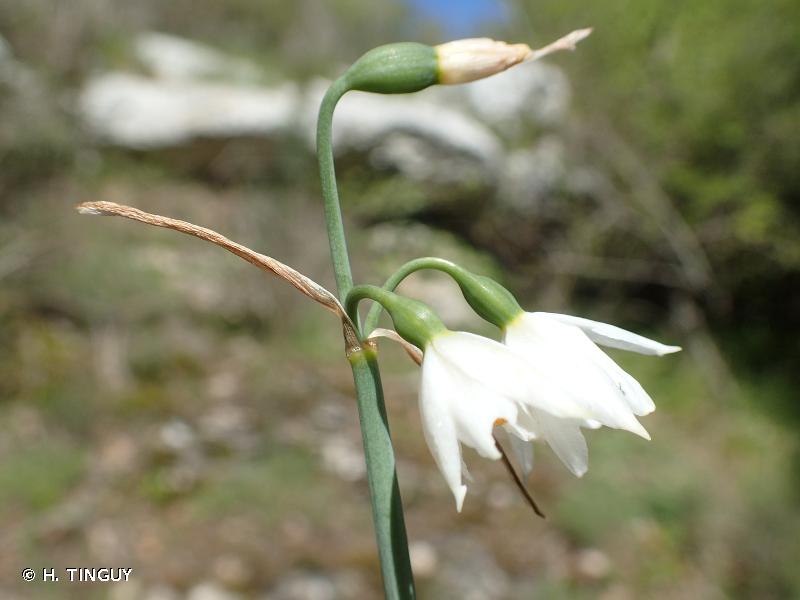
cd_nom

| Author : H. TINGUY |
 |
To get the picture, please visit:
Hugues Tinguy
email : inpn@mnhn.fr
Despite the Creative Commons license, please inform the author of the use which will be made of his photo

| Author : S. Sant/Parc Amazonien de Guyane |
 |
To get the picture, please visit:
Sébastien Sant
Parc Amazonien de Guyane
email : inpn@mnhn.fr
Despite the Creative Commons license, please inform the author of the use which will be made of his photo

| Author : S. Sant/Parc Amazonien de Guyane |
 |
To get the picture, please visit:
Sébastien Sant
Parc Amazonien de Guyane
email : inpn@mnhn.fr
Despite the Creative Commons license, please inform the author of the use which will be made of his photo

| Author : H. TINGUY |
 |
To get the picture, please visit:
Hugues Tinguy
email : inpn@mnhn.fr
Despite the Creative Commons license, please inform the author of the use which will be made of his photo
Taille
5 à 10 cm (hauteur).
Diagnose
Petite plante herbacée, géophyte à bulbe, formant de petites touffes. Les feuilles fines, toutes basales, n'excèdent pas 2.2 mm de large. Les inflorescences sont portées par une tige fine et dressée. Les fleurs sont au nombre d'1 à 3 émergeant d'une spathe à deux valves libres et divisées jusqu'à leur base. Les tépales, très ouverts, sont entièrement blancs d'une longueur/largeur < 2.5. Les étamines sont à peine dépassées par le style (<1 mm).
Détermination
Moyennement difficile.
Espèces proches
Les espèces des genres Leucojum et Galanthus sont plus massives, ont des feuilles > 4 mm de large et des fleurs moins ouvertes (feuilles toujours < 2 mm chez Acis nicaeensis, et fleurs à tépales bien écartés). Acis rosea est une plante de Corse fleurissant l'automne à tépales légèrement rosés (Acis nicaeensis est une plante des Alpes maritimes, à floraison printanière et à tépales blancs). Acis longifolia est une plante corse, à tépales plus allongés de rapport L/l > 2.5 (Acis nicaeensis est une plante des Alpes maritimes, à tépales plus courts à L/l < 2.5). Acis fabrei est une plante vauclusienne à style allongé dépassant les étamines de > de 1 m, à feuilles dépassant les 2.2 mm et à inflorescence à une fleur, rarement à deux (Acis nicaeensis est une plante des Alpes maritimes à style dépassant les étamines de < de 1 mm, à feuilles à largeur < 2.2 mm et à inflorescences entre 1 et 3 fleurs).
Période d'observation
Floraison entre mars et avril.
Biologie-éthologie
Espèce de géophyte (plante vivace à bulbe) de la famille des Amaryllidaceae, autrefois incluse dans celle des Liliaceae, qui compte 1300 espèces dans le monde. Le genre Acis ne compte que 9 espèces, toutes méditerranéennes. Acis nicaeensis est une espèce hermaphrodite et entomogame.
Biogéographie et écologie
Simon Contant(Contan Simon - Botaniste Phytosociologue),2024
Continental
Metropolitan France
Overseas
Marine
Metropolitan France
Overseas
The map presents a summary at the 10 x 10 km grid of the observation data for the species transmitted to the SINP. These data have been subjected to validation filters.
The map presents a reference distribution layer of the species at the scale of departments and marine sectors. The presence and absence data were established by expertise within a network of partners. This reference distribution is used in the validation process of the SINP data at the INPN level.
Corresponds to a report on the basis of at least one observation proved within a period of 10 years (20 years for little-known invertebrates) preceding the year and no presumption of extinction since obtaining the last data nor doubt on reproductive and implemented nature of this population. For migratory species, the presence indicated concerns areas of reproduction.
This status is based on one or more of the following criteria:
This point covers the absence, more difficult by nature to demonstrate than presence. This status is based on one or more of the following criteria:
This status must be assigned to a department in which the presence of the species is casual.
Particular case of absence due to a proven extinction less than a half century ago (older disappearances are treated as "no probable or definite").
In the state of knowledge, we can not comment on the presence or absence in the current department. This is the default status when not comprised in one of the previous categories or whenever there is doubt.
The map shows the global distribution of the species based on GBIF data (Global Biodiversity Information Facility).
